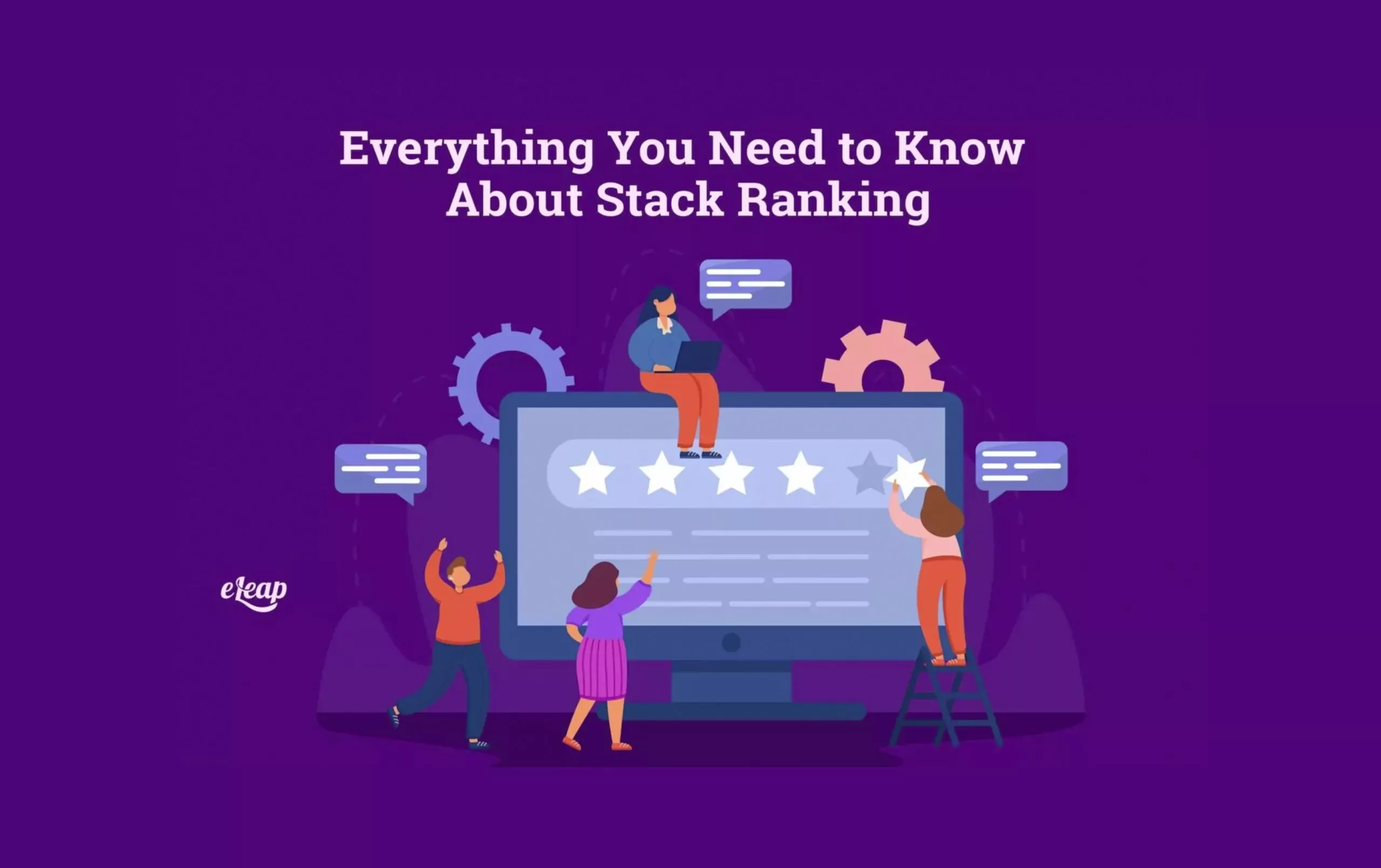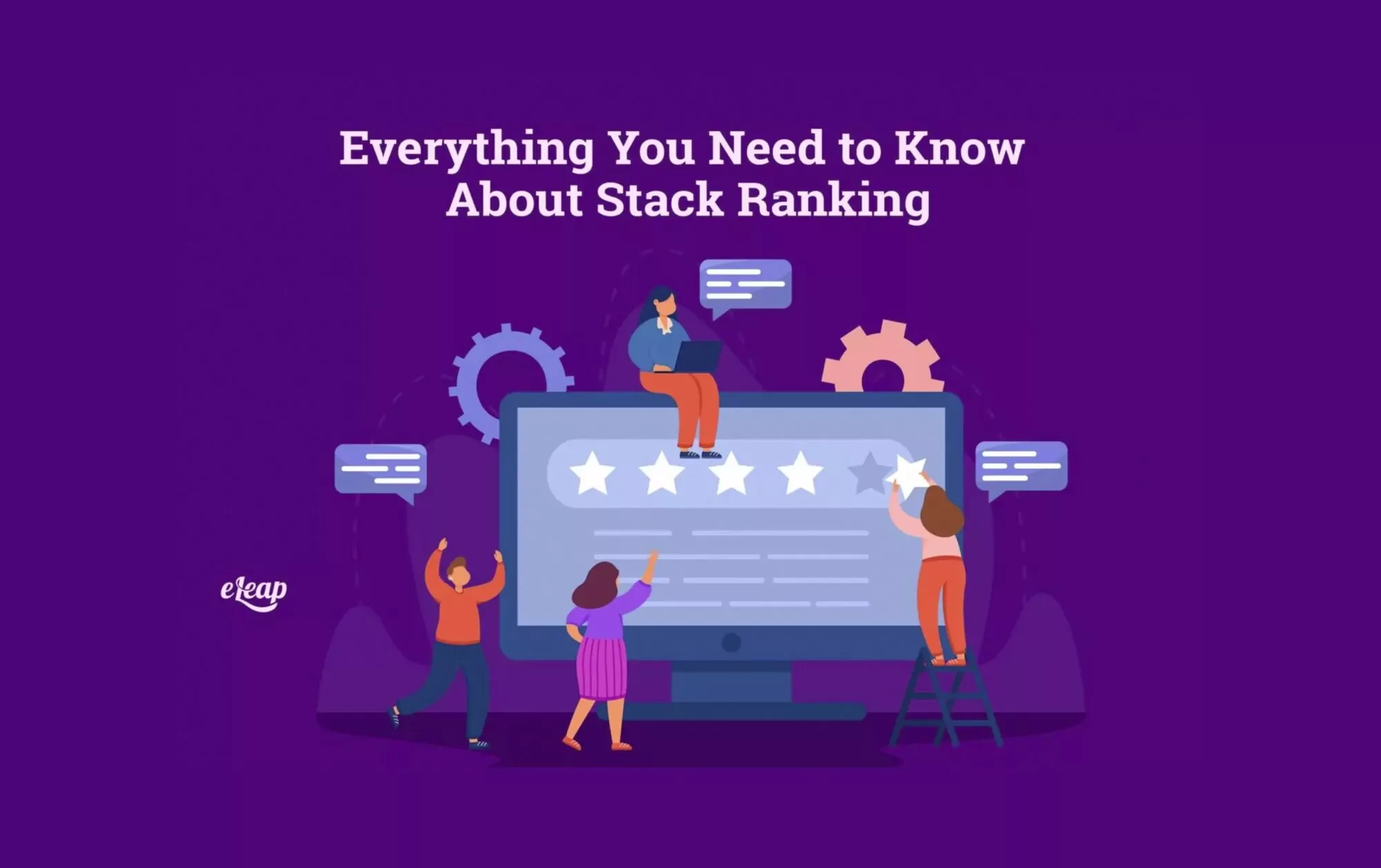Everything You Need to Know About Stack Ranking

If you’re involved in talent management at your company, you’ve likely heard of stack ranking or even used it. Since the 1980s, stack ranking has been one of companies’ main methods to rank their employees. But, with a method this old, a company should consider whether or not it is still the best.

What Is Stack Ranking?
In case you haven’t worked with it before, stack ranking is also known as forced distribution. It is a way of ranking your employees on a bell curve. The curved ranking system includes three different categories:
-
Exemplary
-
Meets expectations
-
Needs Improvement
The typical breakdown of these categories has 15% of your employees ranked “exemplary,” 70% ranked as “meeting expectations,” and 15% as “needs improvement.” The rankings may vary depending on your company.
The goal of stack ranking is to cultivate a competitive culture with employees. It pushes everyone to not want to be in that bottom 15%. The lowest performing employees are often the first to go when layoffs happen. The idea is that your employees will push to be in the 70% or, even better, the top 15%.
While the idea, in theory, makes sense, it has become controversial in recent years. In fact, many companies have started to abandon stack ranking for more healthy ways of managing talent. Before you decide whether stack ranking is the right method for you, it’s a good idea to know why people are moving away from it.
Issues with Stack Ranking
Stack ranking may sound like a simple way to manage your talent pool. In reality, it causes issues that are in direct defiance of employee needs in the workplace.
Employees seek flexibility in their job, development programs, and mentorship from their supervisors. Employees want a supportive work environment that challenges them to do their best.
Stack ranking, on the other hand, has proven to stifle employees in their work environment and can lead to a slew of other problems. In fact, there are three main issues that companies have reported experiencing with stack ranking. Let’s look at them now.
Stack Ranking Hurts Teamwork and Innovation in the Workplace
When you use stack ranking, it can largely affect how your employees work with one another. When employees know that only a set amount of people are considered the best, it leads to toxic competition.
Instead of creating friendly competition in the workplace, they focus on competing with each other rather than the goals of the company.
When your employees are fighting to be the best at work due to stack ranking, they’re more likely to leave their teammates behind instead of working together on projects. This can lead to a negative impact on productivity throughout your workplace.
In order to have a truly successful company, you need high-performing teams. When your employees are fighting against each other, all work they do is hindered by their inability to perform well as a team.
A real-world example of this is when Microsoft was using stack ranking at a time when Apple wasn’t. Both companies are large tech names, but Microsoft fell drastically behind Apple in the metrics of innovation and overall performance. When Microsoft dropped stack ranking, they began seeing improvements in their rankings. But the damage was already done – Apple had pulled too far ahead.
Stack Ranking Can Cause High Turnover Rates
When you use stack ranking, the idea is that you can put the lower 15% on probation until performance is improved. Or simply let them go. The idea here is that you get rid of the poorest performers on a regular basis to make your productivity higher.
However, when you let go of 15% of your workforce, you will need to hire back the same amount of people.
Even if you hire people who are all better than the ones you let go, it’s incredibly costly to hire and train new employees. Plus, you can’t know for sure that they will prove to be high performers, meaning you may end up wasting money.
The cost of a high turnover rate can add up quickly. When you need to replace a worker, you have to pay for hiring, onboarding, and training. There are costs of promoting the position and the cost of leaving the position open while you search. This can cost you money, labor hours, and other crucial elements.
Stack Ranking Promotes Toxic Culture at Work
Stack ranking causes employees to compete against one another instead of working together. This individual mindset can create a toxic work environment. Add in the fact that most workers in a stack ranking environment are afraid of performance reviews, and you’re set up for very unhappy employees.
In a stack ranking environment, every employee’s success and development are based on their manager’s opinion of them. One of the biggest issues with this is that there is likely to be bias involved, whether purposeful or not. This can cause reviews to be ineffective and inaccurate, which can lead to employees feeling resentment towards their manager and, in turn, their job.
When employees feel unhappy at work, everything suffers. Their mood, productivity, motivation, and more are all negatively affected. Work environments have become one of the most important elements of a job in today’s age, so it’s important to provide a healthy one.
Getting Away from Stack Ranking
The best thing you can do for your performance review method is to simply get rid of stack ranking. Moving to a new method that focuses on a person’s individual successes is a great way to boost workplace culture.
When it comes to performance reviews, consider them as coaching opportunities that can help boost the morale of your employees. Address issues they may have, but focus on creating a healthy workplace environment.
When you hold a review, give them time to talk about their experience and take their feedback seriously. Your employees are the backbone of your company, so it’s a good idea to listen to the ideas they have. While you don’t have to implement every idea, considering their feedback can help you realize areas of improvement or blind spots in the company.
Overall, performance reviews should have your employees feeling supported and motivated. Stack ranking has your employees competing against one another to be the best. Changing this and making sure your employees know that their only competition is themselves is a great way to nurture teamwork. You’ll be surprised how much it can help!
Alternative Options to Consider
Instead of stack ranking, consider some of these other alternatives for employee evaluations:
-
Give recognition to your employees when they deserve it
-
Understand the values your employees have to see what motivates them individually
-
Allow feedback and dialogue in performance reviews
-
Implement a peer review system
-
Include check-ins between performance reviews to address issues and areas where your employees are succeeding
-
Allow your employees to advance by providing training and promoting from within when possible.
While not all of these options will work in every situation, every business is sure to be able to use at least one of these options. Taking the fear out of performance reviews can do wonders for morale, performance, and motivation at work.
Creating an open line of communication between supervisors and employees will help them feel that they can communicate with you when needed. They don’t have to wait for an annual review to discuss advancements or concerns.
Employees in today’s age require a work environment that is welcoming, inclusive, and offers them the chance to become the best version of themselves. Stack ranking hinders all of these elements.
Takeaway
While stack ranking was very popular and innovative when it first arrived in the workplace, job cultures are much different now. And, it’s time that performance evaluations reflect that. Be open to new methods of review in your workplace and listen to the suggestions and feedback from your employees themselves.
Moving away from stack ranking has proven to be beneficial to many areas of the workplace. This includes the culture, turnover rate, and overall productivity and teamwork. It’s well worth the effort to change how you’re doing feedback!
The eLeaP continuous performance management system provides organizations with powerful options to attract and retain high caliber team members.